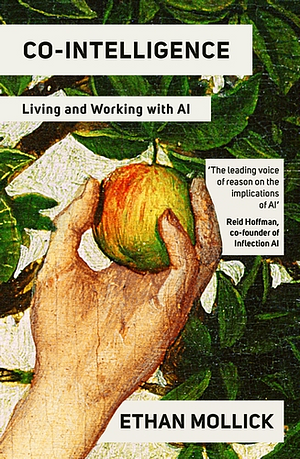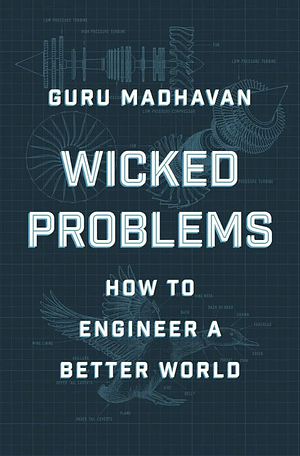Both/And Thinking - Paradox System (Chapter 3)
I’ve started reading Both/And Thinking and am capturing my thoughts here as I go. Right now these are mostly the raw notes as synthesis comes later. You may find it interesting to start with the first post in this series or to read them all.
Today’s reading laid out two foundation concepts about thinking through paradoxes and introduced the concepts of the Paradox System that will be explored in detail in future chapters. The chapter was way more engaging than the meh cup of batch brew I had while drinking it. It also contained several anecdotes and “side details” that resonated with me.
The first of those occurs right up front when one of the authors is describing her experience leading a workshop for IBM mid-level execs about paradoxes. She started with some examples of personal paradoxes as they are common and easy to identify with. She added this statement that was refreshing to read:
I asked, “How many of you wrote down some challenge around balancing work and life?” Almost half the hands went up in the room. (And the response wasn’t only women).
After this, two thinking concepts were introduced, Mules and Tightrope Walking.
Find a Mule
The authors shared some background on mules. Specifically, mules are a cross between a horse and a donkey. Combining a strong, hardworking, but impatient and easily bored horse with a patient, but stubborn and not terribly smart donkey yields a hybrid that is more patient, hardier and long-living than a horse and less stubborn and more intelligent than a donkey. The mule is a synergy of two beings that have some opposites. They are like a paradox.
Finding a Mule means that you find a way to “integrate the opposing sides of a paradox.” Psychiatrist Albert Tothenberg analyzed the writings of people like Einstein. “[H]e noticed remarkable similarities in their creative processes. Their big aha moments often started with noticing the opposing forces in their work. The tensions vexed and challenged them. Yet instead of deciding to focus on one side over the other, they explored how they could bring the oppositions together.”
Einstein’s theory of relativity emerged as a way to understand how an object could be both in motion and at rest at the same time.
Several researchers worked together and found that they could encourage such creative integration. They did this by “chang[ing] the question they asked people—either encouraging them to consider alternative options as oppositional or to consider them as paradoxical, opposing yet interdependent. The people encouraged to think of the alternatives as paradoxical generated significantly more creative solutions to problems.”
Mary Parker Follet encouraged people to seek creative integration in personal conflicts (group or individual). She found that people tended toward one of three solution types:
- Dominating - which forces and either/or or win/lose
- Compromising - which while billed as a win/win also includes and element of losing for both sides
- Creative Integration - which looks to have both sides get what they want without having to give something up.
Mary Parker Follet used an example of a time when she was working in a library. Another patron wanted a window opened. Follet wanted it kept closed. Dominating and compromising would both be sub-optimal to one or both parties. However, when both sides were clear about their actual desires (I read this as surfacing the paradox) they found a solution. The woman wanted some fresh air. Follet wanted to make sure her papers didn’t get blown around. The solution was to open a nearby window that would ventilate the space without creating drafts for Follet’s papers.
This idea of considering opposing ideas is viewed as an evolution advantage on par with the opposable thumb by Roger Martin. It lets us use “tension to think our way through to a new and superior idea.”
The authors closed the section by reminding us that mules are infertile. Therefore when you find a mule you have a temporary solution or response. You will still have the underlying paradoxes and will need to continue to work with them over time.
Walk the Tightrope
Looking for a win/win creative integration is valuable, but finding one is not always easy. Nor is it necessarily the best way to address every dilemma. Sometimes we need to shift between opposing alternatives in a process that we describe as tightrope walking.
One walks a tightrope by making microshifts to correct one’s balance. This is a way to move forward that avoids the large overcorrections that lead to ruts. This allows us to accommodate all sides of the paradox over time.
Combing the Mules and the Tightrope Walking
While researching at IBM on how these patterns work together as exemplified by strategic business unit leaders who need to maintain an existing business and innovate, it was observed that there was an expectation that would be constantly finding creative integrations. Instead, the author found that successful teams spent most of their time walking the tightrope and “subtly, frequently and purposefully shifting their focus and support.” Creative integrations occurred, but less frequently than you think would be required.
This, in reflection, is not too shocking. It makes sense that alternatively pushing each side forward one at a time should move the whole forward, albeit slowly. The creative integrations are the source of speed.
The Paradox System Tools
The Paradox system is a collection of four tools:
- Assumptions: These leverage the power of our ability to consider opposing views at the same time so we can shift from either/or to both/and thinking.
- Boundaries: These address being mindful of ruts, defensive moats and getting stuck in vicious cycles.
- Comfort: This provides focus on being ok with the discomfort that paradoxes generate and accepting it.
- Dynamics: This is the continuous change that working with paradoxes requires.
These sets of tools are not independent; they reinforce one another. The more that we change our assumptions and mindsets, the more that we can build supporting boundaries, scaffolding, and guardrails. The more that we create such boundaries, the more that they reinforce our assumptions and emotions.
Chapter Takeaways
For completeness and my future reference, the authors suggest these takeaways
- Intertwined patterns help us navigate paradoxes toward more virtuous cycles:
- Breeding a mule (creative integration) involves finding a synergy that accommodates opposing sides simultaneously;
- Tightrope walking (consistent inconsistency) involves making choices that enable ongoing microshifts between opposing sides.
- The paradox system includes four sets of tools that work together to support both/and thinking: assumptions, boundaries, comfort, and dynamism (ABCD).
- The tools in the paradox system are paradoxical, comprising opposing yet interwoven elements. Navigating paradoxes is paradoxical.
Note: I was away with my family for the last week and spent a couple of days remembering what my job was and how I am supposed to do it, hence the break. I strongly encourage you to go take one too.
I mentioned my coffee above. Another part of this effort has been that I am trying to force myself to read somewhere that isn’t my home or desk. It has been useful for focus and change of scenery reasons. The easiest option, especially as we aren’t fully into Spring/Summer yet is to choose cafes. Today I picked one with only outdoor seating near an errand I had for when my reading should be done. While I don’t plan to revisit, it did suggest that maybe outdoor seating with no cover is a bad idea for me.



